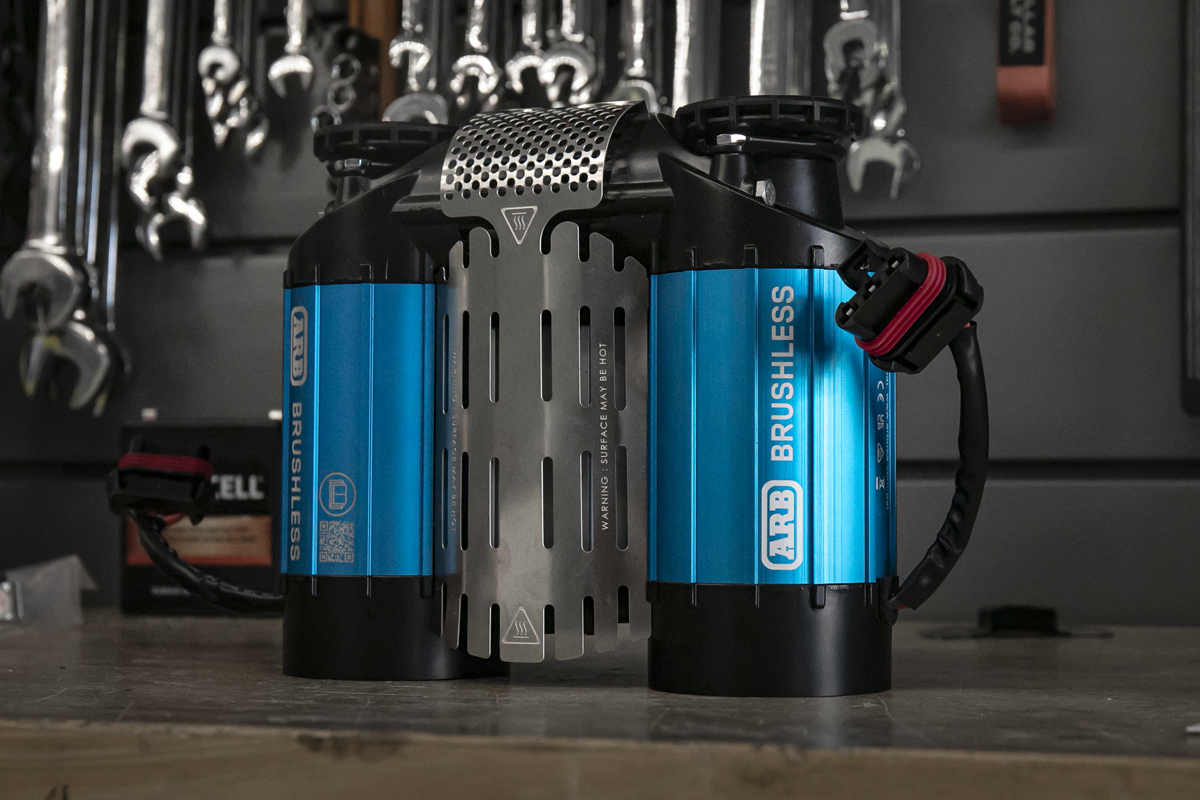
After decades of success in the onboard compressor market, ARB finally launched something new… the ARB Brushless compressor. But is it worth the $1000 price point?
I’ve been running the brushless compressor for about 4 months now, over 5-6 different off-road trips, so we’ve had plenty of time on the trail testing everything. We tested and experienced the heat temperature, the increased output over the non-brushed compressor, and more.
Just a reference, I’ve tested the original brushed compressor in over five different vehicles over the last 10 years, and it’s been rock solid. I LOVE the ARB classic non-brushed twin compressor. I’ve used the classic for air lockers, airing up 35″ tires, 37″ tires, and even 40″ tires on many trips over the years. Sometimes abusing the compressor, airing up 3-4 trucks back to back. And guess what… ZERO problems.
Big shout to Mudify.com for letting us test this compressor. They carry a huge inventory of ARB parts and have always been good to us when we have urgent ARB questions/concerns. Check out Mudify.com for everything ARB and much more.
Before we get into the review, let’s go over what makes this brushless compressor different from the brushed compressor.
Why you would want the ARB brushless:
- Brushless motor provides longer life, higher efficiency, and no maintenance
- Active cooling with automatic fans prevents overheating
- Smart technology adapts to temperature and vehicle charging, with soft startup to reduce power spikes
- 50% more airflow than previous ARB brushed compressors
- 100% duty cycle – same as brushed compressor
- Quick-release mounts for fast installation and easy removal
- IP67-rated housing vs. old IP55-rated non-brushless protects against dust and water
- No external relays required, simplifying setup
- Polarity correction harness for safe and reliable connection
Okay, now that that’s out of the way, which of these bullets actually matter, and what do they mean?
Table Of Contents
Brushless Vs. Brushed Comparison
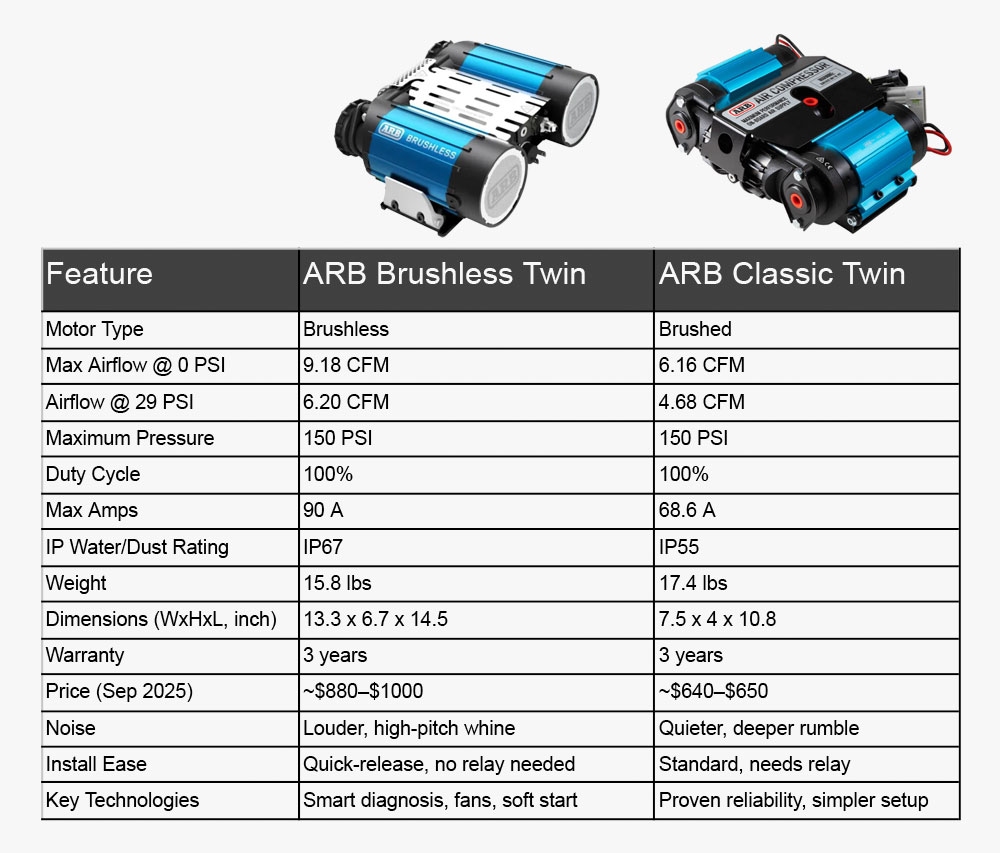
Here is a quick comparison table between the two.
- Max PSI: Both: 150 PSI
- Max Amps: Brushless: 90 A, Classic: 68.6 A
- IP Rating: Brushless: IP67, Classic: IP55
- Duty Cycle: Both: 100%
- Maximum Airflow @ 0 PSI (CFM): Brushless: 9.18, Classic: 6.16
- Airflow @ 29 PSI (CFM): Brushless: 6.20, Classic: 4.68
- Weight: Brushless: 15.8 lbs., Classic: 17.4 lbs.
- Warranty: Both: 3 years
- Relay Required: Brushless: No, Classic: Yes
- Quick-Release Mounts: Brushless: Yes, Classic: No
- Noise Level: Brushless: Louder (High-Pitch), Classic: Quieter (Lower-Pitch)
- Cooling: Brushless: Active (Fan), Classic: Passive (Fan)
- Smart Technology: Brushless: Yes, Classic: No
- Dimensions (WxHxL inches): Brushless: 13.3 x 6.7 x 14.5, Classic: 7.5 x 4 x 10.8
Brushless Motor
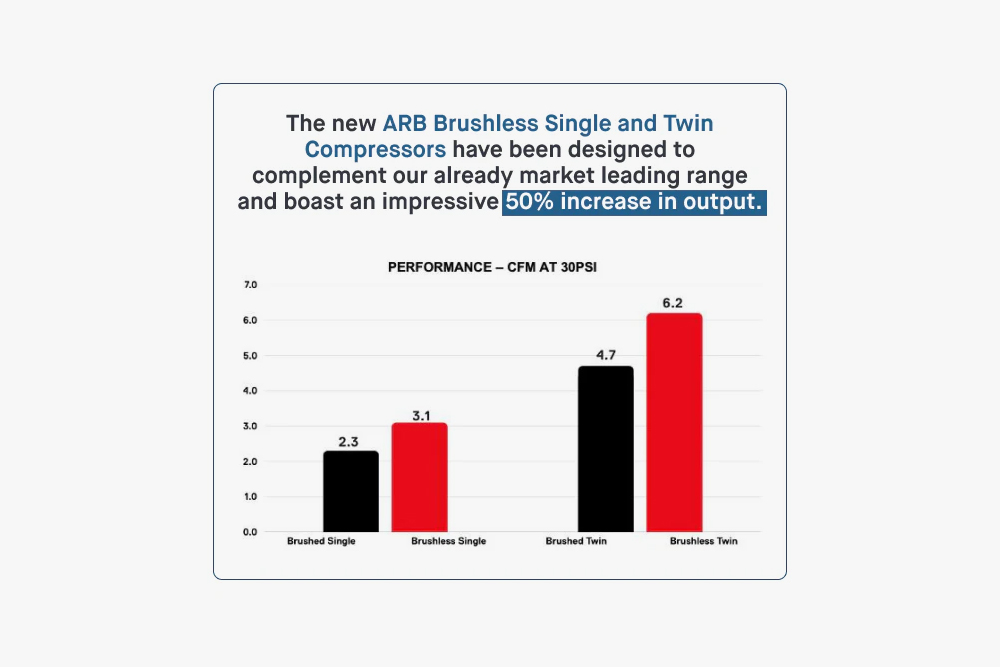
The internals are significantly improved. The new brushless motor eliminates wearing brushes and commutators (spinning switch that changes current direction in a motor) found in brushed motors. Removing these parts results in a maintenance-free motor that runs more efficiently, produces less heat, and operates more quietly. More on the heat and sound later.
The new internals feature an active cooling system with dedicated fans for each motor, which operate only when needed. The system also includes “smart features” like real-time status reporting via a series of beeps, voltage protection, motor isolation (shutting down one motor in low voltage situations), and soft startup to reduce strain on the 12V system.
These newly integrated features lead to a reported 50% increase in air output compared to ARB’s brushed compressors.
50% Output Increase – Real World Test
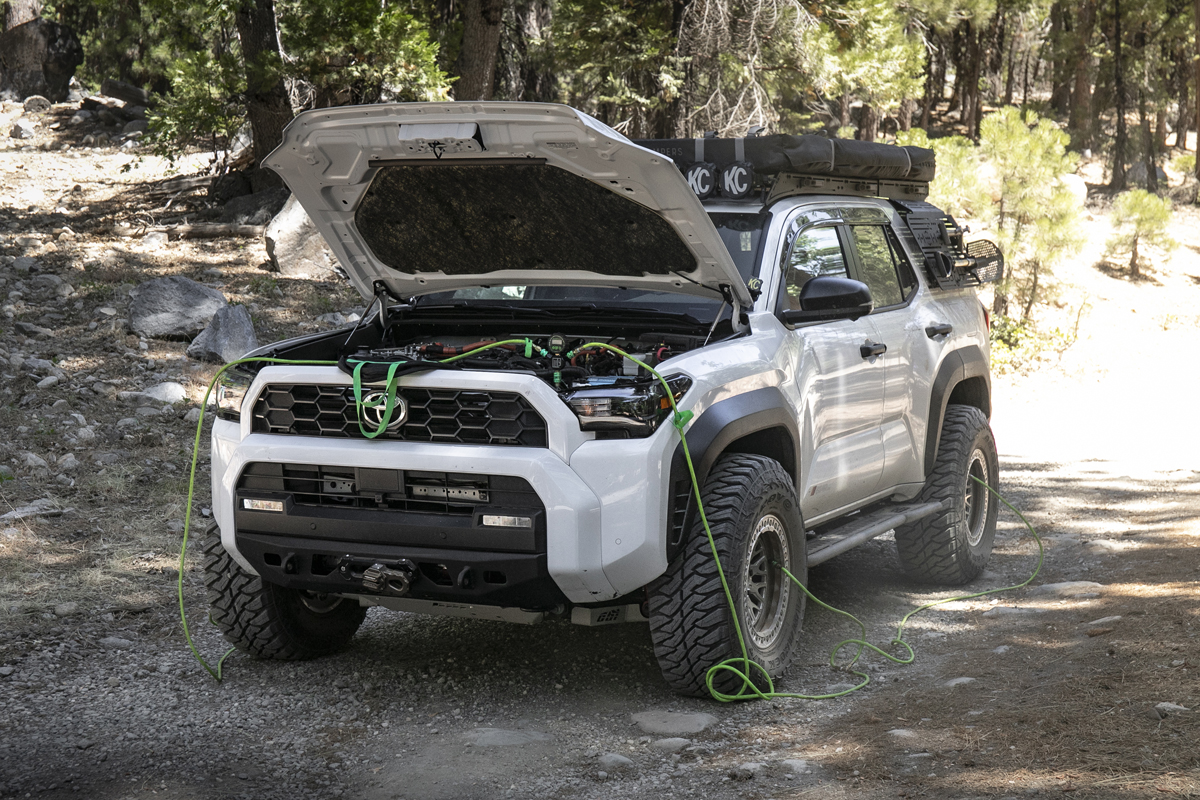
A 50% increase in output means the new output is 150% of the original. It’s 50% more than the baseline 100%, not double. So if the old compressor delivered 100 units of air, the new one delivers 150 units, not 200. Just to clear that up.
What did we find in the real world?
We aired up two sets of 35″ tires from 15 PSI to 35 PSI using our MORRFlate hose kit. One test with the brushed compressor and the other with the brushless.
- Brushed: 9:05.32
- Brushless: 7:05.67
After our test, we found that the brushless compressor was approximately 1 minute 59.65 seconds faster than the brushed compressor. This also equates to the brushless being exactly 21.93% faster than the brushed. So is it exactly 50% faster? No. Not in our test anyway.
Maybe in the perfect altitude, a controlled environment, and/or with all other factors aligning perfectly… the brushless compressor might hit 50%, but that was not the case in our test.
Takeaway?
While the brushless offers higher performance, efficiency, speed, durability, less maintenance, and more advanced protective electronics… I don’t know if the increased 2 minutes is worth an increase of $350. I understand it’s not all about the speed, but that is one of the biggest selling points, and in our test, it didn’t quite live up to the numbers. It’s a very cool compressor, but is it worth $350 more than the brushed compressor?
Smart Technology
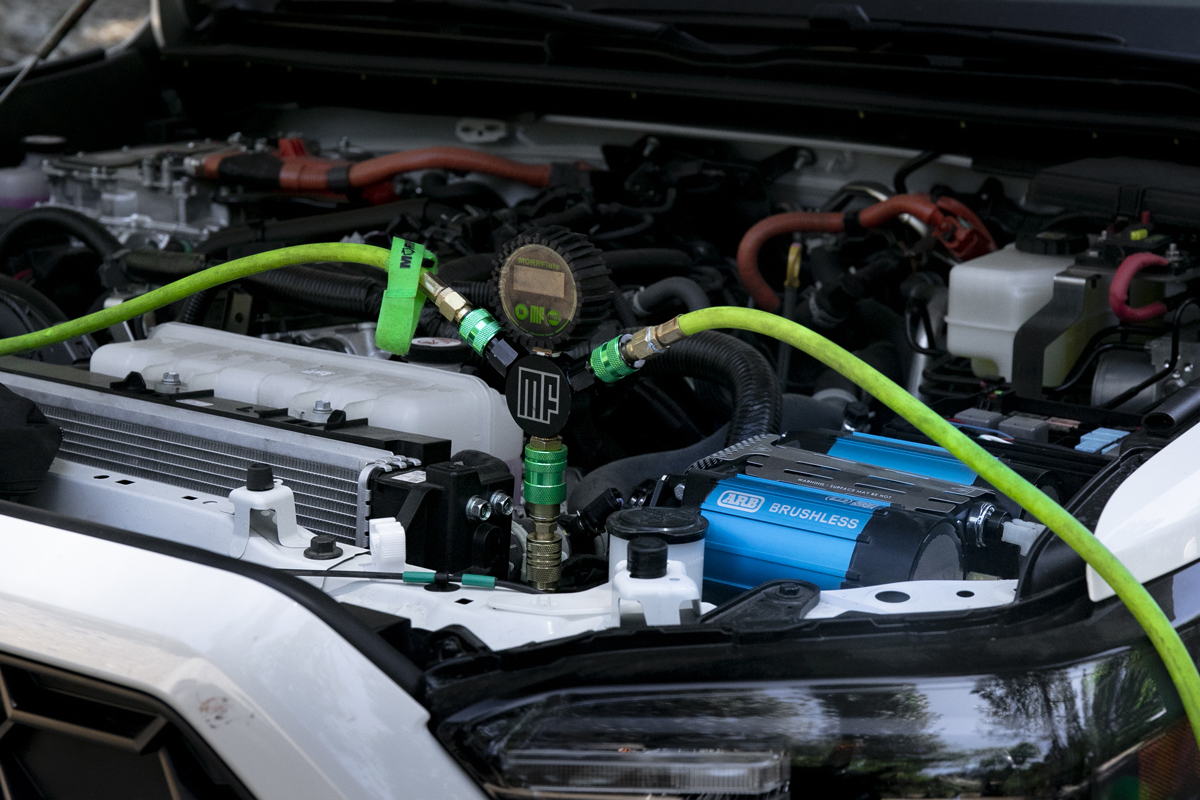
ARB says “Smart technology adapts to temperature and vehicle charging, with soft startup to reduce power spikes“… but what exactly does that mean?
The new brushless features built-in sensors that track temperature, voltage, and current draw… letting the compressor optimize airflow and motor speed for different conditions. If the system detects that the 12V system is under strain (say, drops below 11.5V) or ambient temperatures are extreme (say, over 300°F), it automatically makes adjustments and will regulate airflow down to reduce the strain on the compressor.
If one of these event occur, the compressor will slow down or even shut off one of the twin motors rather than stopping both completely.
The brushless also features a “soft startup” feature, which is somewhat of a staggered activation. The compressor starts more gradually and avoids drawing a large amount of current all at once, which helps prevent power spikes that could stress your 12V system.
This combination of features increases reliability and prolongs the compressor’s life.
Trail Takeaway: All that said, I have never had a problem with the brushed compressor getting too hot or failing under low voltage. That’s not to say it can’t happen.
Smart Reporting
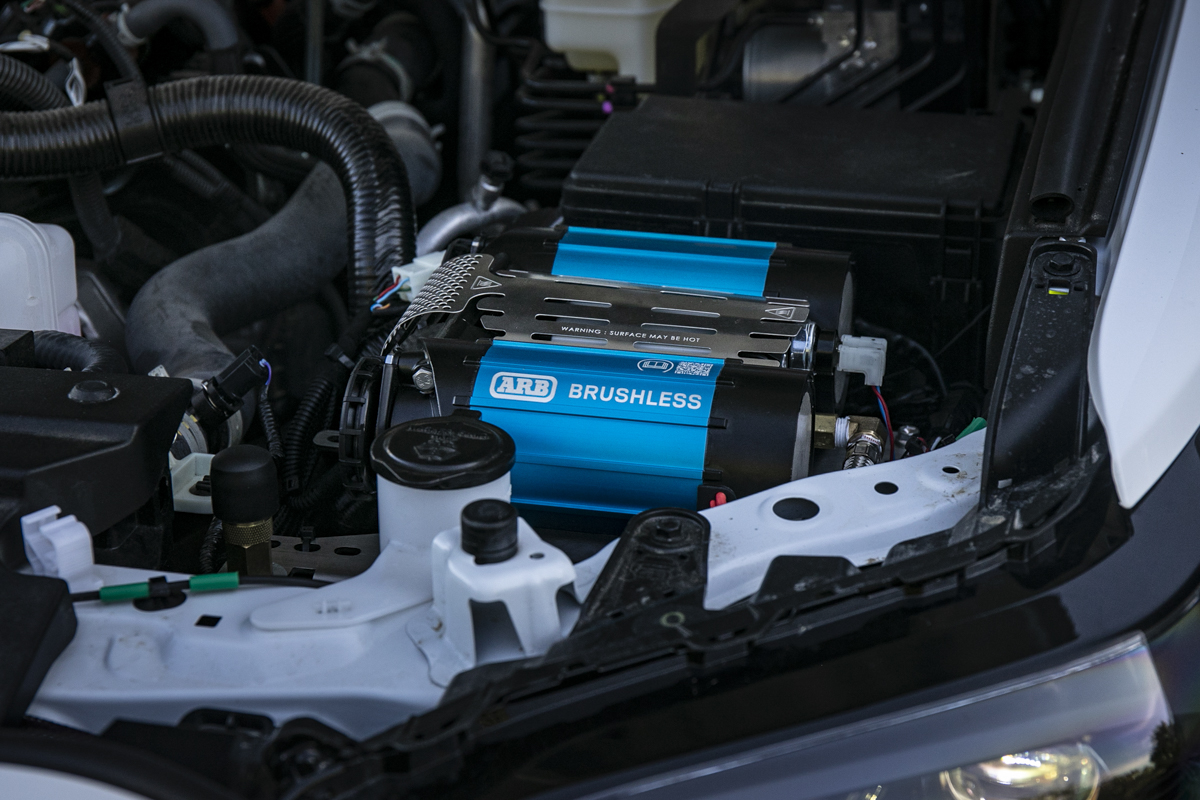
This is actually a pretty cool feature and has not been discussed much. When first using the compressor, I started hearing random beeps after the install and then again on the trail. I had no idea what was going on, and under further research, there are meanings to the beeps. The new compressor uses a series of beeps to indicate specific fault codes. Each number of beeps corresponds to a different system fault, helping you diagnose issues.
- 1 beep: Electronic speed controller over temperature (cooling or ventilation issue)
- 2 beeps: Compressor head over temperature
- 3 beeps: Compressor stalled or failed to start (mechanical fault or blockage)
- 4 beeps: Power supply under voltage (wiring, battery, or ground issue)
- 5 beeps: Power supply over voltage (charging system or grounding fault)
- 6 beeps: Current draw too high (low voltage, high pressure, mechanical fault)
- 7 beeps: Motor position hall sensor fault (magnetic or circuit issue)
- 8 beeps: Compressor free run time limit reached (air system failure suspected)
After a fault, the compressor stays stopped and signals the code until the switch is turned off and on again to reset it.
Build Quality & Install
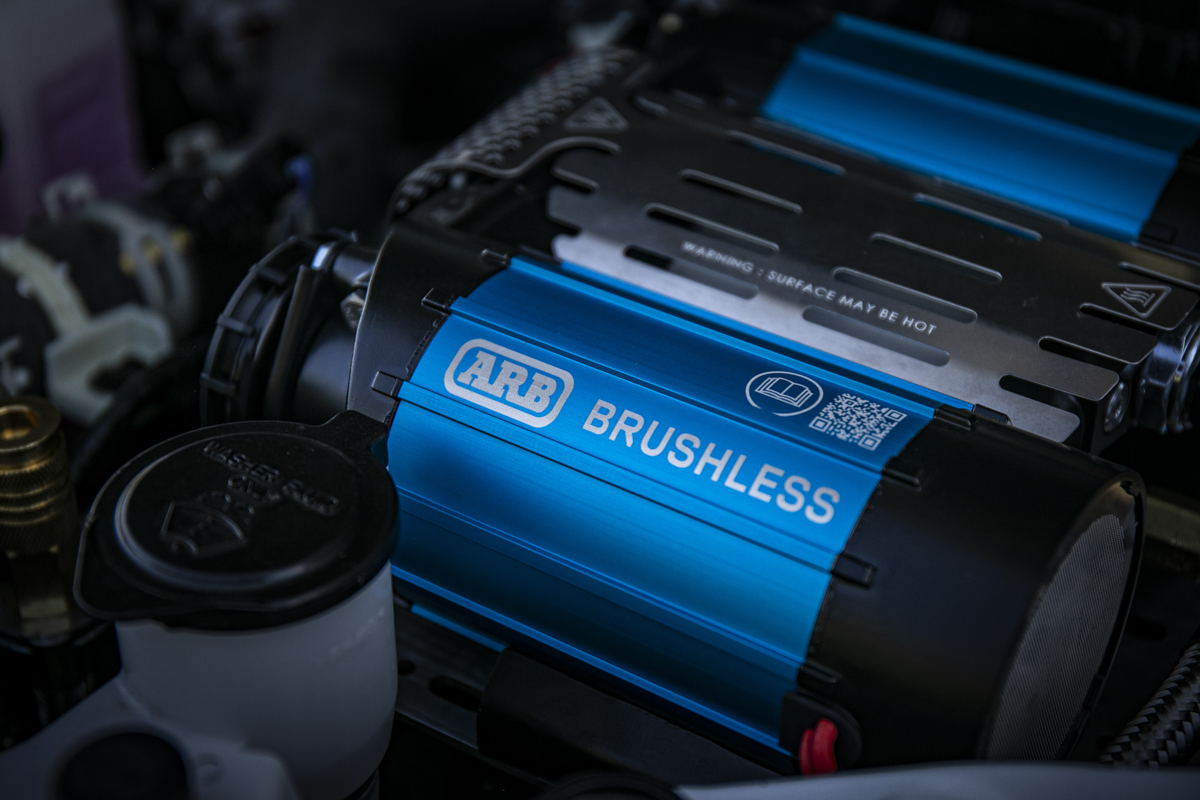
For more info on the full installation, check out this post: Brushless Compressor Installation & Wiring Guide.
The build quality on this new unit is next level. It’s absolutely stunning. The aluminum shield that covers the center of this unit… wow.
Some notable updates here:
- Polarity correction harness for safe battery clamp connections is nice
- No external relays needed makes the installation slightly easier, but not by much
- Quick-release mounts for faster install/removal, which is strange to have a quick release on a compressor that’s usually always hard-mounted
- IP67-rated housing vs. old IP55-rated housing
The brushless features higher-grade materials throughout and tighter tolerances compared to the classic twin.
One of the biggest and most important upgrades is that the housing now has an IP67-rated housing for superior dust and water protection versus the Classic’s IP55 rating. This is huge for guys doing serious water crossings. In real-world water crossings, an IP67-rated housing means the compressor is fully protected against dust and can withstand temporary immersion in water up to 1 meter (about 3 feet) deep for up to 30 minutes without water ingress. This makes it highly resistant to splashes, rain, mud, and brief water crossings, ensuring reliable operation in wet off-road conditions as long as immersion is not prolonged or deeper than specified.
The brushless twin is physically smaller in width and lighter by about 1.6 pounds, allowing easier fitment in tighter spaces, which is also nice.
Takeaway: The brushless offers better build quality and says “better, more efficient” installation than the classic, but I found the installation took the same amount of time.
Price
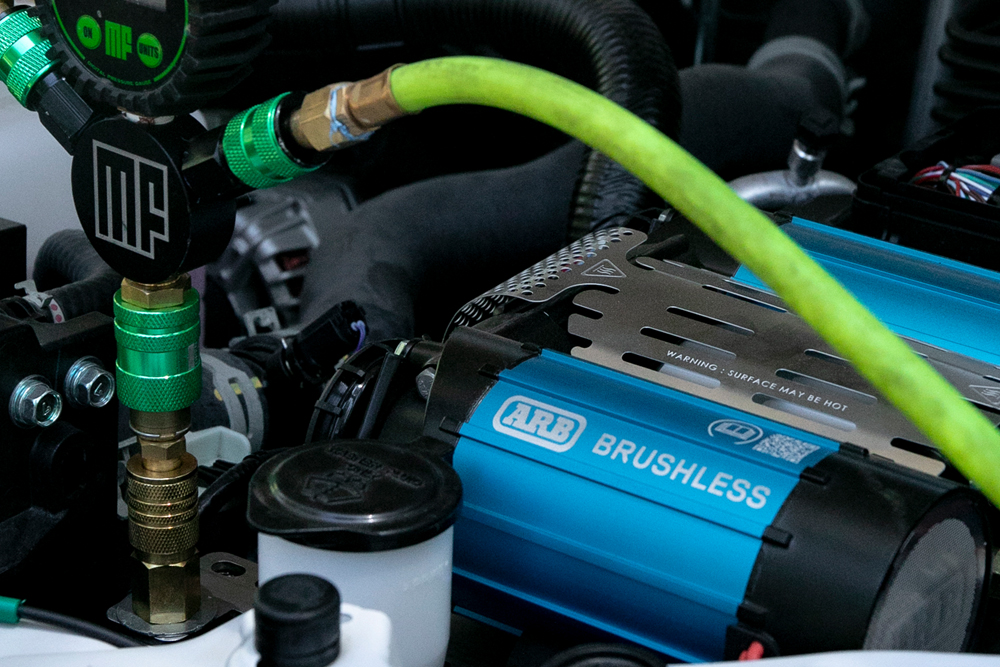
- ARB Brushless Twin, about $1000
- ARB Classic Twin, about $650
That $350 jump for the brushless version hurts. If speed is the only goal, that is a steep premium for a small real-world gain. That said, from a tool perspective, I buy brushless units wherever possible. Do what you want with that information, haha.
Heat
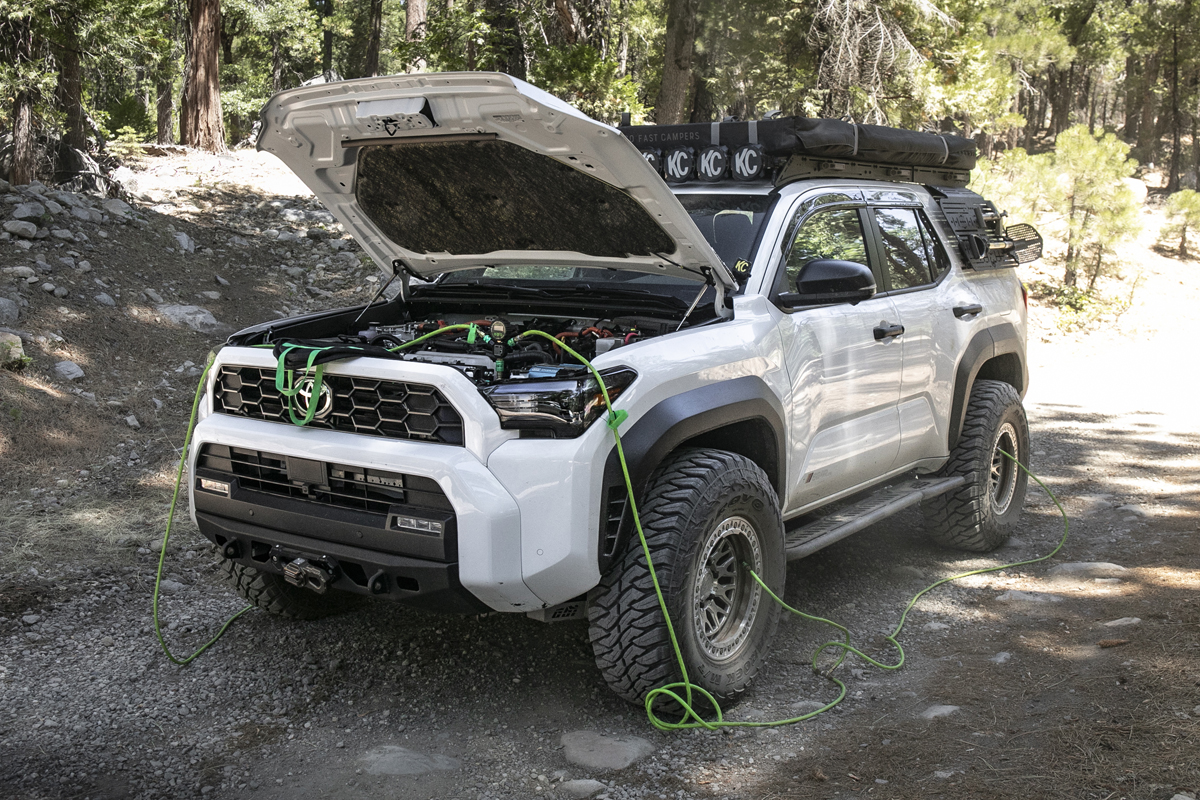
Here is where things get interesting: the new brushless is built with active cooling, which provides automatic fans to prevent overheating. That might be the case, and they might prevent the unit from overheating, but that doesn’t mean this unit doesn’t get HOT.
When I say hot, I mean extremely HOT. The brushless runs way hotter than the classic.
After airing up a set of 35″ tires on the trail, I removed the hose fitting and found out just how hot the new compressor gets. I was so used to the temperature on the brushed compressor that I didn’t even think about wearing gloves, and man, was that a mistake. I burnt the living daylights out of my index finger and thumb while disconnecting a brass QD fitting. Both my thumb and index finger had a burnt white spot, just a mild first-degree burn. Nothing to worry about, but definitely noteworthy.
Noise Level
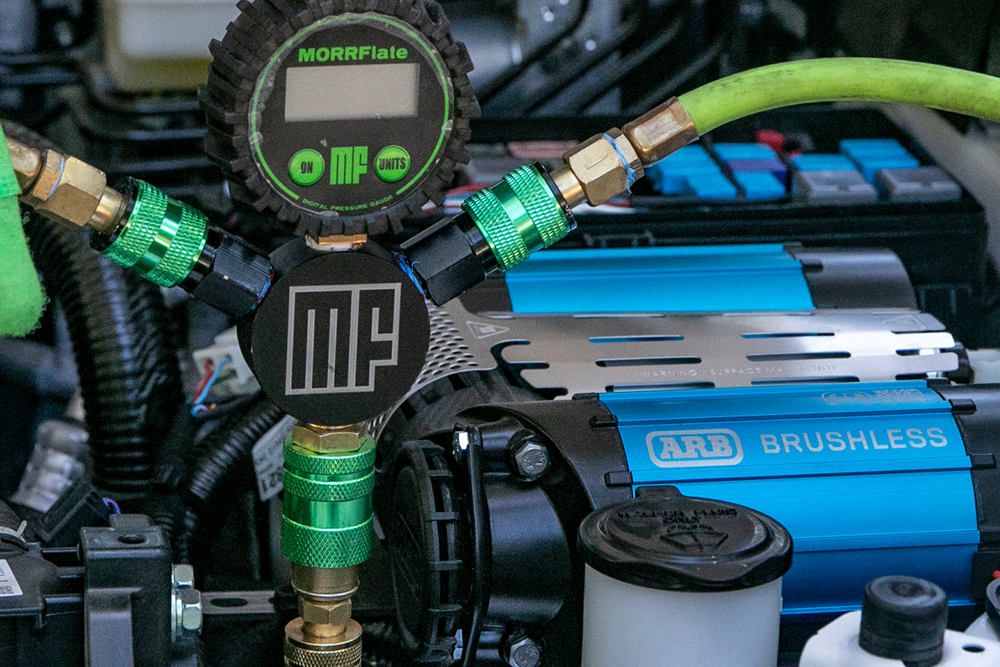
The new brushless compressor is much louder than the classic. It’s almost obnoxiously loud compared to the twin. The pitch is also very different… instead of the motor rumble from the brushed unit, the brushless emits a high-pitched whine as it runs. This isn’t a huge deal since airing up usually happens out in the wilderness, but it’s worth considering.
Final Thoughts
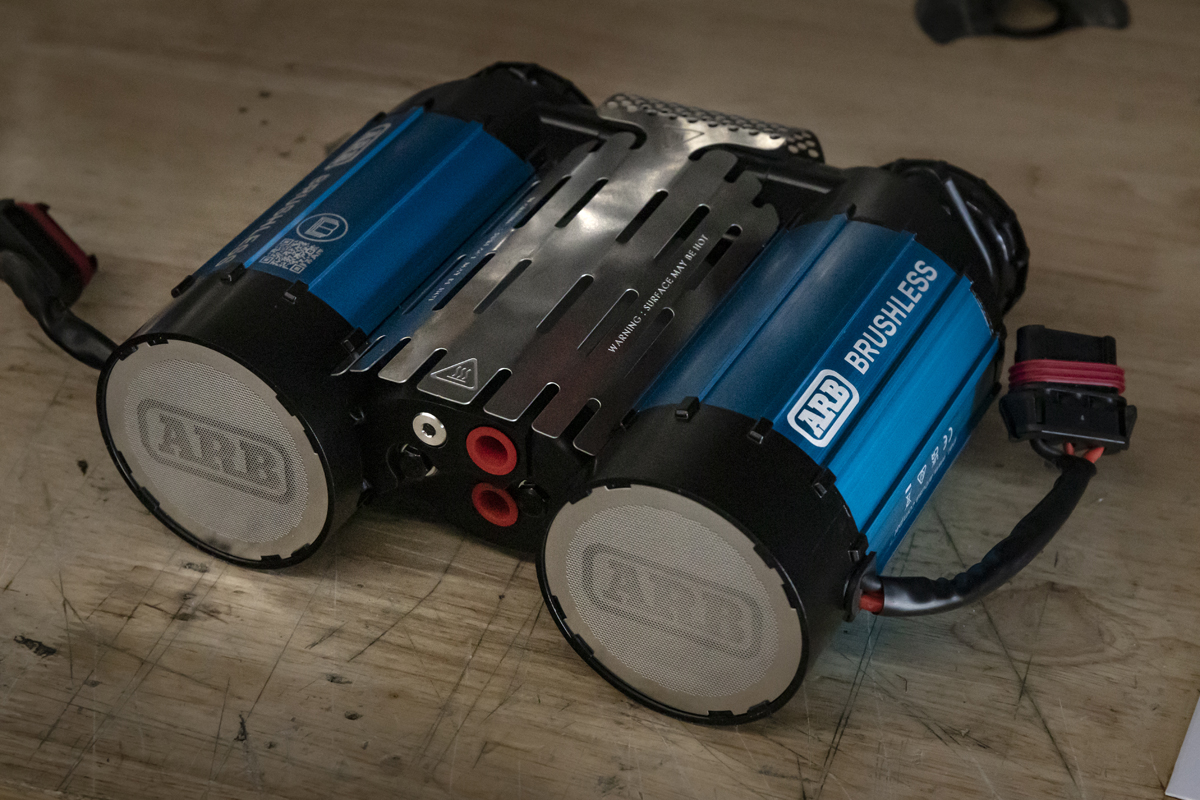
The Brushless Twin offers quite a few upgrades over the classic twin, but is it worth it?
It’s faster, features better internals, is smaller/lighter, has smarter power management, potentially has longer compressor life, and is a bit more universal with its new mounting plate.
Where I’m getting hung up on this one is that it’s not that much faster than the classic. Again, ARB quoted 50% faster, and they may have achieved that in their control, but in our tests, we saw roughly 22% faster inflation time in the field.
The new twin runs much hotter, enough to cause a mild burn if you don’t wear gloves.
Is the brushless twin priced right? Yes and no. With rising costs everywhere, spending close to $1,000 is tough to justify compared to the classic model, which is field-tested and proven to just work reliably.
Who is it for?
If absolute speed, efficiency, and advanced tech are the priorities, and budget is not a concern, the brushless twin is a worthy upgrade. However, for most users who already own or trust the classic, the mid-performance boost and feature improvements may not justify the cost difference. The classic remains reliable, proven, and highly capable on the trail.
The new unit is impressive and delivers, but the classic remains a solid, cost-effective workhorse.
If you’re running bigger tires (37″ – 40″ tires), and money is no concern, jump on the new one for sure.
If you’re building something on a budget but still want that classic ARB reliability, go with the classic.
If you’re considering upgrading from the classic to the brushless, I don’t think it’s worth the money or the hassle of ripping out an old unit and throwing a new one in.

Love mine so far and yeah the temp safety sensors on it DO work, on really hot days you can hear it adjusting for heat and probably voltage. A month later when it was cooler temps it ran flawless. Hope it lasts as long as my brushed ARB did.
Awesome, yeah it’s definitely a learning process with this one. Have you gone through understanding all the beeps yet? lol